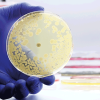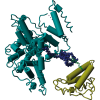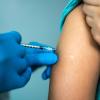A new paper provides the physical basis for why approved antibody therapeutics are not working in neutralising the recent variants of concern, such as Omicron and its subvariants.
The study found that certain mutations appear repeatedly in emerging variants showing convergent evolution.
One such evolution occurs at three amino acid positions K417, E484 and N501 in the spike protein’s receptor binding domain (RBD).
Nearly half of the 4.3 million variant sequences in GISAID database that contain any of these three mutations have all three occurring together.
Although individual mutations have both beneficial and deleterious/adverse effects, when they come together, deleterious/adverse effects get cancelled out, leading to improved selection of the mutations together.
The researchers found the three RBD mutations perform very distinct and specific roles that contribute toward improving the virus fitness and build the case for their positive selection, even though individual mutations have deleterious effects that make them prone to negative selection.
Compared to the wild-type, K417T escapes Class 1 antibodies and has increased stability and expression; however, it has decreased ACE2 receptor binding. E484K escapes Class 2 antibodies; however, it has decreased receptor binding, stability and expression. N501Y increases receptor binding; however, it has decreased stability and expression.
The authors conclude the collective effect of these mutations is far more advantageous for virus fitness than the individual mutations.
Image credit | Science-Photo-Library




